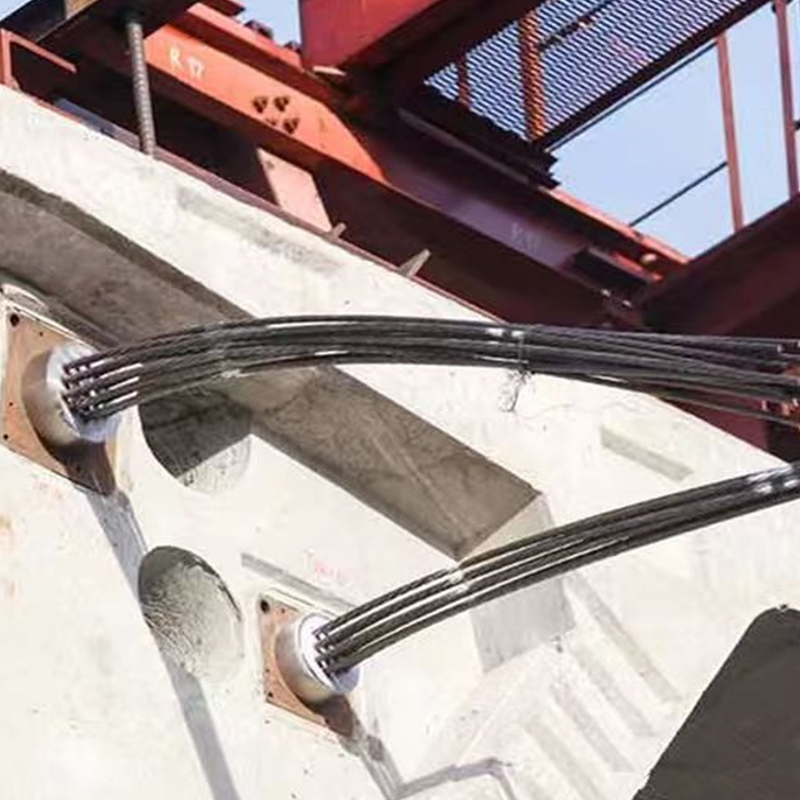Unlocking the Secrets of a Robust Post-Tensioning System
In the realm of construction engineering, innovation is the cornerstone of progress. Among the myriad technologies that have revolutionized the industry, post-tensioning systems stand out as a pinnacle of efficiency and structural strength. Let's delve into the intricacies of these systems, unraveling the mystery behind their widespread adoption and undeniable impact on modern construction.
What is a Post-Tensioning System?
Post-tensioning is a construction technique that enhances the performance of concrete structures by introducing controlled internal stresses after the concrete has set. Unlike conventional methods, post-tensioning involves tensioning high-strength steel strands, commonly known as tendons, within the hardened concrete. This process imparts strength, flexibility, and durability to the structure, mitigating potential issues like cracking and deflection.

Components of a Post-Tensioning System
1. Tendons
At the heart of a post-tensioning system are the tendons, meticulously crafted from high-strength materials such as alloy steel. These tendons, strategically placed within the concrete, bear the responsibility of anchoring the forces generated during tensioning.
2. Ducts
To safeguard the tendons from external elements and ensure their longevity, ducts, typically made of high-density polyethylene, encase the tendons. This protective layer shields the tendons from corrosion, preserving the structural integrity of the system over time.
3. Anchorage
The anchorage components play a pivotal role in transferring the stress from the tendons to the concrete. Precision-engineered anchorage systems are crucial for distributing forces evenly, guaranteeing optimal load-bearing capacity.
Advantages of Post-Tensioning Systems
1. Enhanced Structural Performance
Post-tension significantly improves the load-carrying capacity of concrete structures, enabling engineers to design slimmer and more economical elements. This results in structures that not only withstand heavy loads but also exhibit superior performance under diverse conditions.
2. Cracking Mitigation
Traditional concrete structures are susceptible to cracking, especially in areas prone to seismic activity. Post-tensioning, however, minimizes the risk of cracking by actively countering tensile forces, ensuring the longevity and aesthetic appeal of the structure.
3. Cost-Effectiveness
While the initial investment in post-tensioning systems may seem higher, the long-term benefits far outweigh the costs. Reduced maintenance, extended lifespan, and improved structural efficiency contribute to significant cost savings over the life of the structure.
Applications Across Industries
1. Bridges
Post-tensioning has become a staple in bridge construction, allowing for longer spans and more aesthetically pleasing designs. The technology enables engineers to push the boundaries of bridge architecture, creating structures that are both functional and visually striking.
2. High-Rise Buildings
In the realm of high-rise construction, post-tensioning systems offer unparalleled advantages. The ability to reduce the overall weight of the structure while maintaining strength makes these systems indispensable for towering skyscrapers.
Conclusion
In conclusion, the adoption of post-tensioning systems represents a paradigm shift in the field of construction engineering. The synergy of cutting-edge materials, meticulous design, and innovative technology has propelled these systems to the forefront of modern structural solutions. As we continue to push the boundaries of what is possible in construction, post-tensioning stands tall as a testament to human ingenuity and the relentless pursuit of excellence.

Comments
0